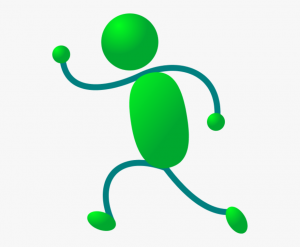Some Physical Therapists are gait and balance experts, meaning they assess the walking patterns of the patients they see. Gait simply refers to the process of walking and balancing. By observing and evaluating your gait, PTs can help improve your stability and efficiency, and reduce the likelihood of an injury or fall. Recently, many people have taken up walking as part of their daily exercise regimen. By understanding how the gait cycle works you can improve your walking form for better results. Here are a few tips on how to get the most out of your daily exercise.

Most people associate “posture” with how they stand or sit, but posture is just as important when you are in motion, such as when you’re walking. Leaning forward during your walk, for example, can throw your posture off and result in reduced glute activation, low back pain, and limited lung capacity. And many don’t realize that your lungs extend from the bottom of your rib cage to above the collarbones and when your posture is not aligned properly, you can’t expand your lungs enough to take a full breath of air. Make sure that you are upright to give the lungs plenty of breathing room!
Gait starts with your feet. When you take a step, it is important to land on your heel with your knee almost fully straight. Landing with full foot contact (instead of on the heel) has been shown to contribute to fall risk as you are more likely to scuff your foot or trip over an obstacle. Landing flat-footed or on your toes also prevents the stabilizing musculature throughout the legs from activating appropriately. When you land heel-first, your quadricep (thigh) muscle are better able to control knee extension, and your glutes and hamstrings can engage to advance the body forward.
When you load your leg correctly, your weight will distribute throughout the foot until you finally push off through the toes. Allow your hip to fully extend so that your foot is slightly behind you as it lifts from the ground. This allows for a full, powerful stride.
It is also important to pay attention to your stride length and cadence. You should spend a symmetrical amount of time on each leg to improve stability and reduce risk of injury.
When we think about walking, we rarely consider the arms, but upper body movement is actually critical for efficient gait. The arms should swing as you walk to contribute to your momentum. They should not hang loosely at your sides. Rather, the arms and legs should move in a reciprocal way – the left arm advances as your right foot takes a step, and vice versa. This is a natural movement pattern that will help you stay balanced as you walk. Using the arms also contributes to a slight rotation of the spine with each step – another means of shifting weight and advancing the body forward.
These are some of the basics of gait patterns that we see generally across multiple demographics because of human anatomy. Every body is unique, however, and the way we walk changes over time due to a variety of factors. If you are interested in a personal gait assessment, we would love to offer you our services here at Point Performance!
